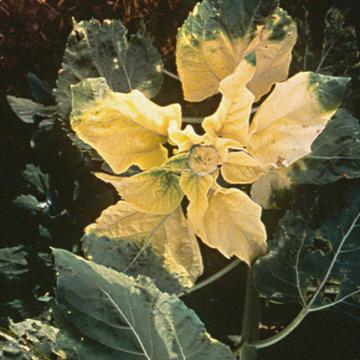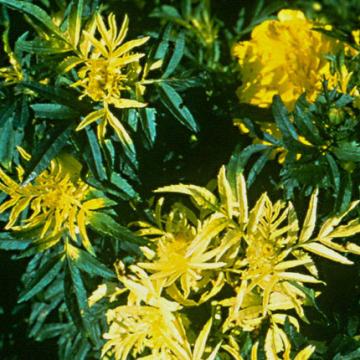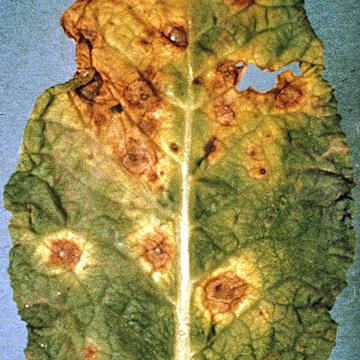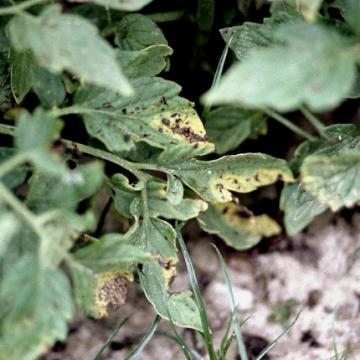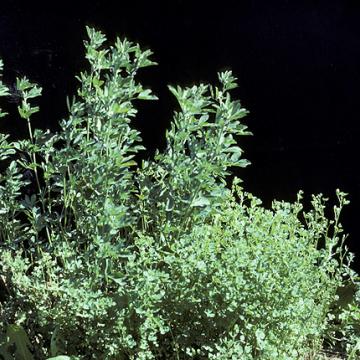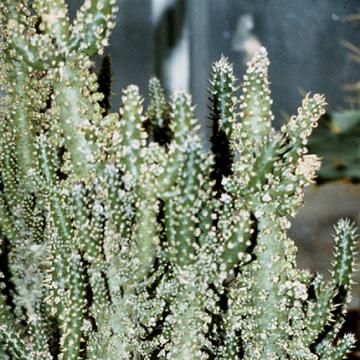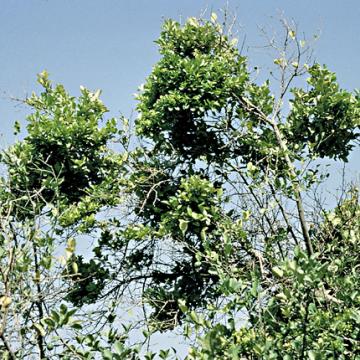DISEASE: Pseudomonas leaf spot
HOST: Marigold
Marigolds with yellow apical chlorosis attributed to toxin production by the pathogen.
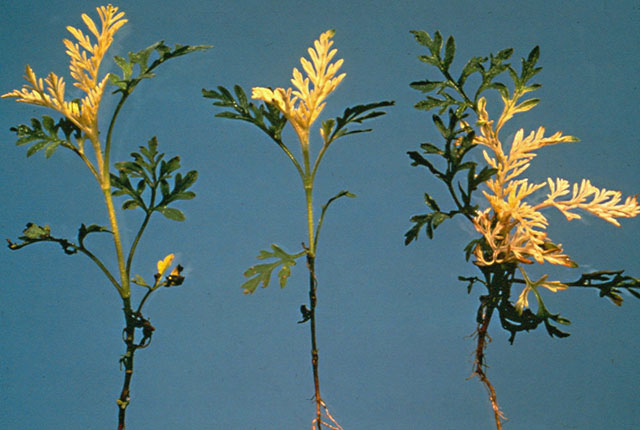
Pseudomonas leaf spot | Marigold
DISEASE: Pseudomonas leaf spot
HOST: Marigold (Tagetes erecta)
PATHOGEN: Pseudomonas syringae pv. tagetis
SOURCE: R. Durbin
DISEASE: Pseudomonas leaf spot
HOST: Marigold
Chlorotic leaves with total loss of chlorophyll. Disease is also known as toxic chlorosis.
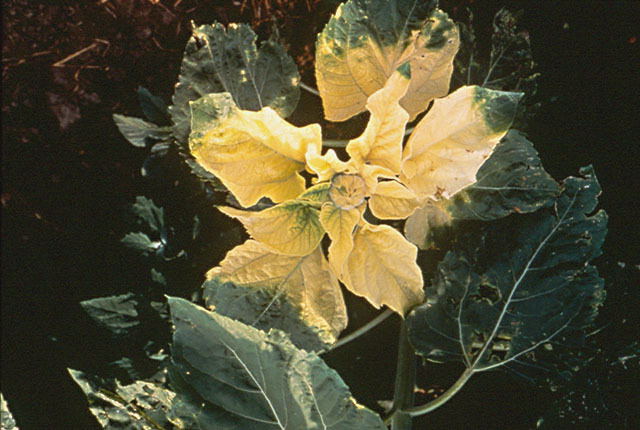
Pseudomonas leaf spot | Marigold
DISEASE: Pseudomonas leaf spot
HOST: Marigold (Tagetes erecta)
PATHOGEN: Pseudomonas syringae pv. tagetis
SOURCE: R. Durbin
DISEASE: Pseudomonas leaf spot
HOST: Marigold
Plants with bright yellow apical chlorosis.
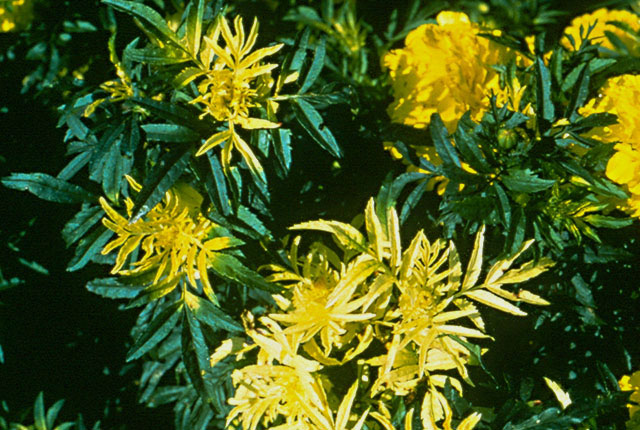
Pseudomonas leaf spot | Marigold
DISEASE: Pseudomonas leaf spot
HOST: Marigold (Tagetes patula)
PATHOGEN: Pseudomonas syringae pv. tagetis
SOURCE: R. Durbin
DISEASE: Pseudomonas leaf spot
HOST: Primrose
Leaf with brownish red spots and reddening of adjacent areas. Disease begins as small, water-soaked lesions that later coalesce into large necrotic spots.
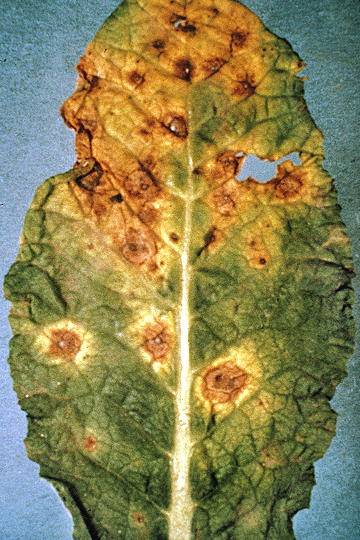
Pseudomonas leaf spot | Primrose
DISEASE: Pseudomonas leaf spot
HOST: Primrose (Primula sp.)
PATHOGEN: Pseudomonas syringae pv. primulae
SOURCE: APS
DISEASE: Syringae leaf spot
HOST: Tomato
Leaves with brown necrotic lesions and chlorotic margins. Symptoms vary greatly among cultivars. Some have black or brown lesions with bright yellow, chlorotic areas and others do not have yellowing.

Syringae leaf spot | Tomato
DISEASE: Syringae leaf spot
HOST: Tomato (Lycopersicon esculentum)
PATHOGEN: Pseudomonas syringae pv. syringae
SOURCE: R. Gitaitis
DISEASE: Witches'-broom
HOST: Alfalfa
Alfalfa plant (center) exhibiting stunting and proliferation of stems. Other symptoms are small, rounded, chlorotic, often puckered leaves and a yellowish cast.
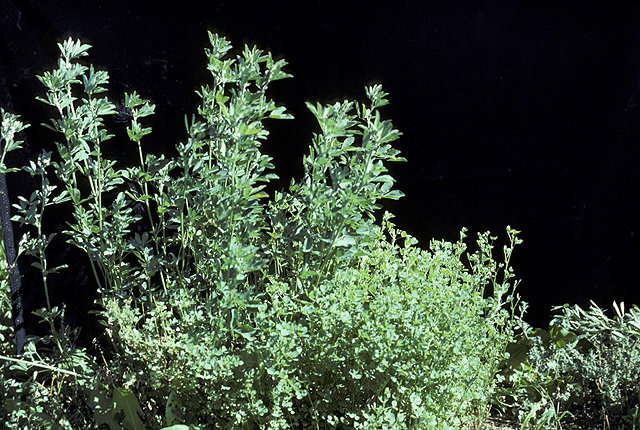
Witches'-broom | Alfalfa
DISEASE: Witches'-broom
HOST: Alfalfa (Medicago sativa)
PATHOGEN: 'Candidatus Phytoplasma trifolii'
PATHOGEN SYNONYM: Phytoplasma Clover proliferation group
SOURCE: S. Thomson
DISEASE: Witches'-broom
HOST: Alfalfa
Young plant (left) with small, numerous stems (witches'-broom). Healthy stems (right).
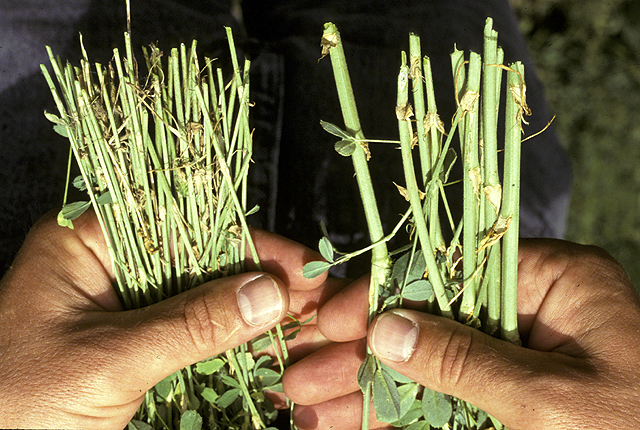
Witches'-broom | Alfalfa
DISEASE: Witches'-broom
HOST: Alfalfa (Medicago sativa)
PATHOGEN: 'Candidatus Phytoplasma trifolii'
PATHOGEN SYNONYM: Phytoplasma Clover proliferation group
SOURCE: S. Thomson
DISEASE: Witches'-broom
HOST: Cactus
Witches'-broom of Opuntia cactus.
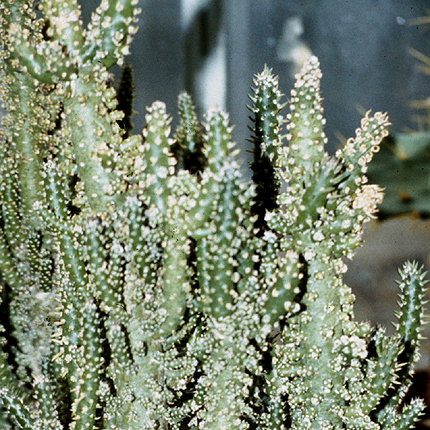
Witches'-broom | Cactus
DISEASE: Witches'-broom
HOST: Cactus (Opuntia sp.)
PATHOGEN: 'Candidatus Phytoplasma' sp.
PATHOGEN SYNONYM: Phytoplasma (undefined)
SOURCE: R. McCoy, M. Davis
DISEASE: Witches'-broom
HOST: Citrus (Lime)
Lime tree with compact, small leaves (witches'-broom). Leaves on older brooms dry out and eventually drop, leaving dead, bare branches. There are no flowers or fruit on brooms.
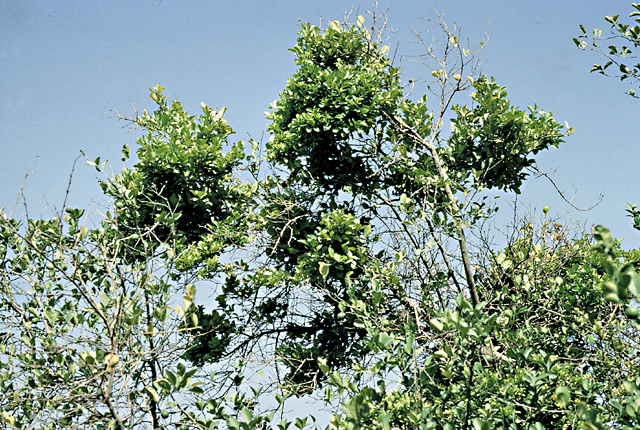
Witches'-broom | Citrus (Lime)
DISEASE: Witches'-broom
HOST: Citrus (Lime) (Citrus sp.)
PATHOGEN: 'Candidatus Phytoplasma aurantifolia'
PATHOGEN SYNONYM: Phytoplasma Peanut witches'-broom group
SOURCE: J. Bove, M. Garnier



